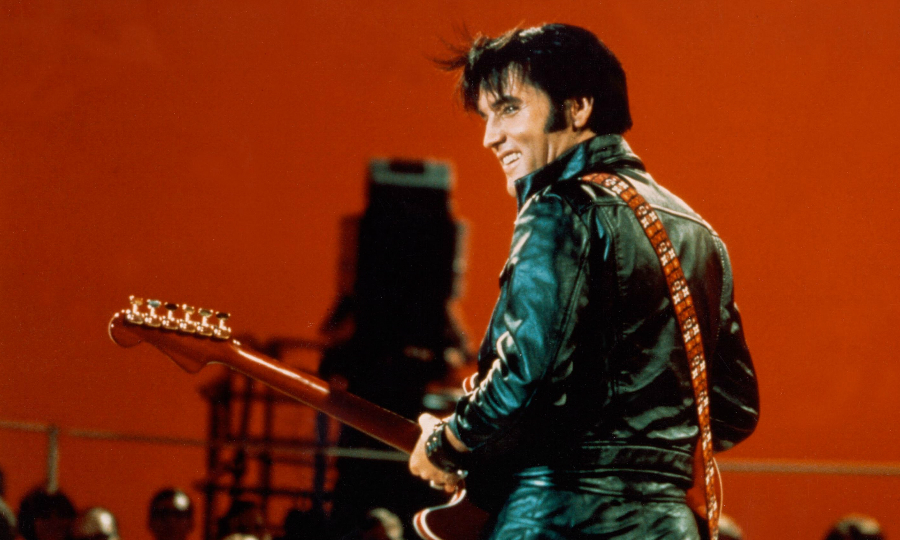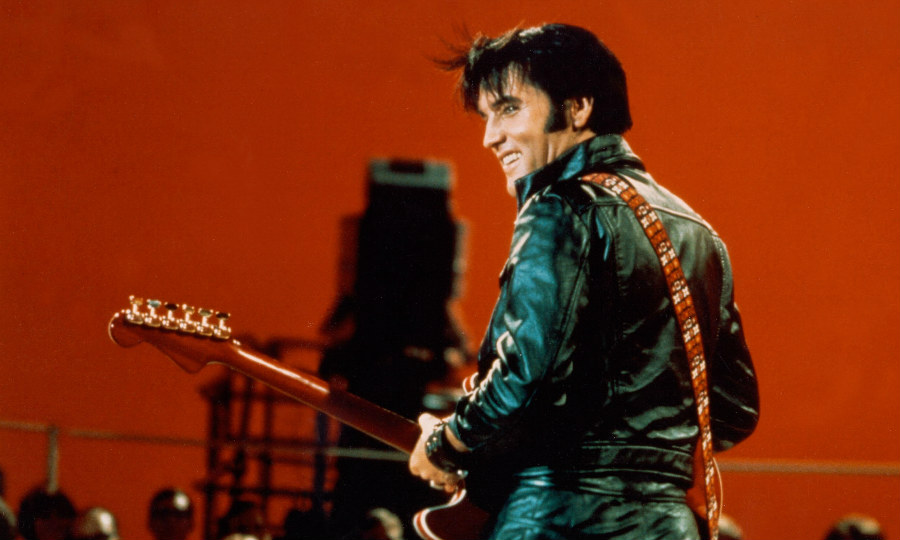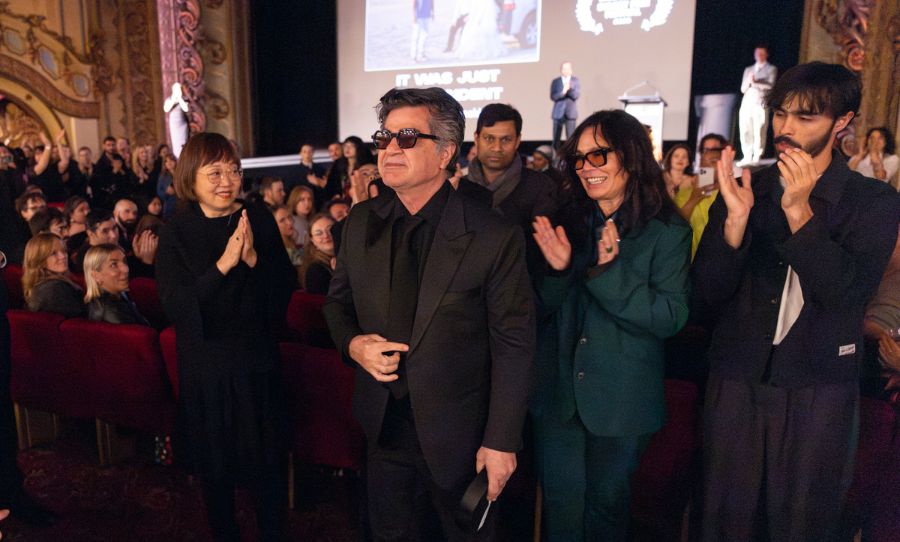By the ’60s Elvis Presley’s Danish manager Colonel Tom Parker had pushed him into a heavy film making schedule. With a focus on formulaic, modestly budgeted musical comedies, Presley fell into a mire of exclusivity clauses and disenfranchisement.
Previously he had left the world of rock n’ roll to join the United States Army between March 1958 and March 1960. At this point in time he was the biggest name in entertainment.
Deeply unhappy with his career, historians Connie Kirchberg and Marc Hendrickx describe it as such.
“By then, of course, the damage had been done. Elvis was viewed as a joke by serious music lovers and a has-been to all but his most loyal fans.”
Shortly before Christmas 1966, more than seven years since they first met, Presley proposed to Priscilla Beaulieu and they were married in May ’67 at a brief ceremony in their suite at the Alladin Hotel in Vegas.
After the flop of the Clambake LP, Elvis’s sixteenth soundtrack album, that RCA executives recognised a problem. On February 1, 1968, Presley’s only child Lisa Marie was born. This helped to alleviate Presley’s despondency and set him on track for his historical ’68 Comeback Special.
Thus plans were made for The Kings iconic 1968 Comeback Special. The most legendary Elvis Presley concert of all time.

Elvis Presley’s 1968 Comeback Special was an iconic return for The King. Not least of all because he orgasmed in his black leather pants during the performance.
The Nerves
“Elvis was hardly ever nervous – but he was then,” recalls drummer D.J. Fontanna. It was true he had been out of the musical limelight for a while, “We played a couple of songs, and it got loose after a while, and it turned out fine.”
Though if Presley has shaking in his boots he sure as hell didn’t show it when he appeared onscreen. Dressed head to toe in black leather and armed with a piercing stare and curled lip he was the epitome of cool.
At first however, Presley was so sceptical that it almost didn’t happen. When the famously iron-willed Colonel Tom Parker met with NBC he proposed they produce a TV special where Elvis would sing Christmas songs.
At the time television specials featured multiple artists whereas this would feature solely on Presley. The unorthodox approach was then commandeered by Hullabaloo director Steve Binder and producer Bones Howe who proposed Presley do “something really important” and announce his return as a performer.
The proof was in the pudding. According to Binder, when The King came backstage after the performance and costume designer Bill Belew, while drying the star’s sweat soaked outfit, discovered that Presley had orgasmed into his black leather pants.
“There is something magical about watching a man who has lost himself find his way back home,” critic Jon Landau remarked. “He sang with the kind of power people no longer expect of rock ‘n’ roll singers. He moved his body with a lack of pretension and effort that must have made Jim Morrison green with envy.”
At Presley’s behest they flew in his old bandmates, Fontana and guitarist Scotty Moore and they begun rehearsals for the segment. Binder later decided they needed one more song to fill out the segment over a Christmas tune. Thus they beseeched vocal arranger Earl Brown to compose the ode to racial harmony, If I Can Dream.
Elvis was reportedly so proud of the track that he recorded the vocals in the dark, lying on the ground of the studio in foetal position, “and when he got done, he came in the control room, and we played it maybe 15 times. He just loved it so much.”
The Performance
The day of the show Elvis was rehearsing a gospel medley when Binder realised Parker, who was in charge of ticketing the informal sit-down segment, had given most of the tickets to NBC security guards. They ran to the closest Bob’s Big Boy and begged people to come and watch Presley perform. Elvis got over his stage fright and the show began at 6 p.m.
“This is supposed to be the informal section of the show, where we faint or do whatever we want to do, especially me,” Presley said jokingly. “I first started out in 1912.” Then they launched into renditions of That’s All Right, Heartbreak Hotel, Love Me, and a dozen other classic.
During the set, Fontana beat his drumsticks against a guitar case rather than a drum kit. “We’d done that from time to time,” he recalls. “We didn’t really rehearse. We’d just go out there and wing it and do the best we could. That’s all me and Scotty and Elvis really needed. We picked the songs right off the top of the head. It was just about how we did it in the early days.”
Two days after the sit-down set they filmed a stand-up performance in which a particularly sweaty, and raunchy Presley played modern renditions of hits for shrieking fans. And he soaked it in, joking with the audience, “You have made my life a wreck, nah incomplete” he sang with a laugh during Love Me Tender. The nerves were well gone and it was now clear, Elvis was back.
Over the course of two sets Elvis put down lightning hot versions of Jailhouse Rock, Don’t Be Cruel, Trouble, Heartbreak Hotel, and Hound Dog. The show ended with an electric If I Can Dream in front of now-iconic red lettering that spelled out E-L-V-I-S. Producer Bob Finkel later claimed to have powered the letters by setting up a generator outside on Parker’s front lawn.
The Second Life
The following year however, Presley had launched his second life with a residency at Las Vegas’ International Hotel. The gruelling two year residency led to 636 sold out shows. Two shows a night, seven days a week. He released a succession of hits, including Suspicious Minds and The Wonder of You in the years that followed.
Unfortunately, despite the success his personal life shattered around him. In the ’70s he divorced his wife after she confessed to having an affair with her Karate teacher Mike Stone, whom Presley introduced her to.
This was a blow from which he would never recover and began using tranquillisers, barbiturates, and amphetamines to slide under the blanket of numbness. His paranoia led him to believe Mike Stone was trying to kill him, eventuating in two coma’s from barbiturates in 1973.
Less than nine years after the ’68 Comeback special aired, Presley died of a heart disease. He was 42. Nevertheless, between fans, friends, and historians alike it’s the image of The King clad in black leather, surrounding by adoring fans, ruling his kingdom that burns the clearest in time.



